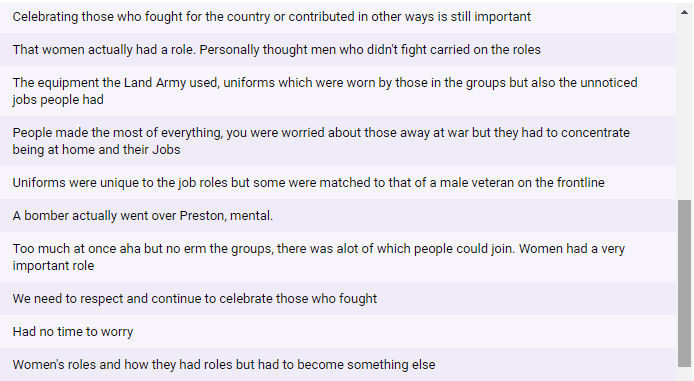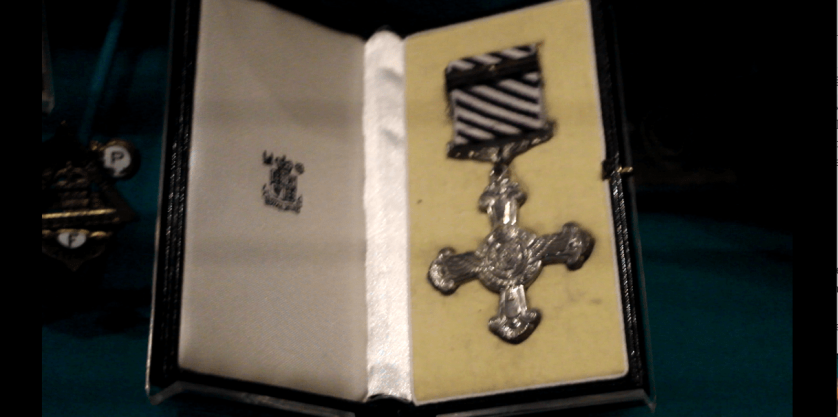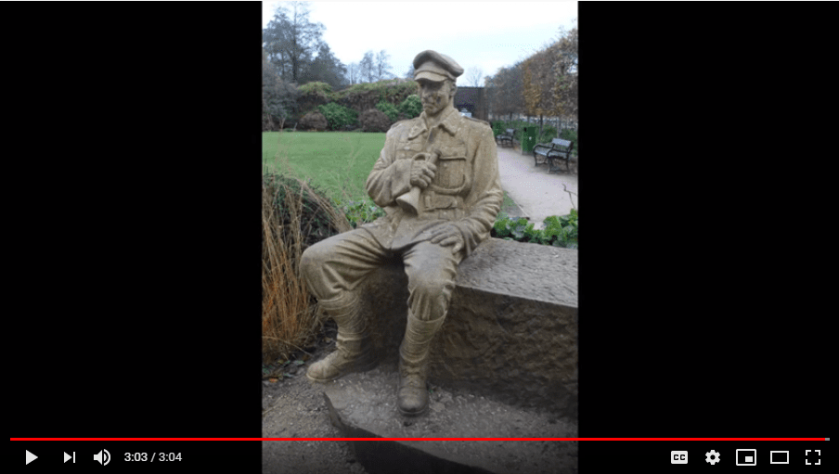My documentary is an expository style about women’s roles within WW2. The way in which this relates to that of characteristics and contexts is that I have an interview that I could base the documentary off to lead to other shots. These other shots being a mix of archive material which in this case was pictures while other shots are a mix of museums visits, Remembrance Sunday parade and a small visit to a place that didn’t hold that much anymore. The sounds used within my work were voice-over, that of the interviewee and soundtracks. All these being non diegetic sounds, no sounds were recorded with my camera apart from the interviewee.
The idea started because I wanted to see if this was a subject that I could use within my FMP. From there I started to ask my target audiences of the things that they would like to see. Within the first research survey I had decided that I would look into facts, how many women were in groups plus died, the amount of groups that women had. Having done that research I started my secondary research phase when I at first looked into American women’s job roles and English women’s job roles. From the two blogs that go into excessive detail helped in me deciding in what information I would want within the future of creating a voice-over. I looked into the key facts which I mainly found out the how many women were kidnapped by POW’s but also the amount of people who joined the effort of the war in each countries plus deaths.
The second set of primary research I was able to ask questions based on the secondary research I had conducted during that week plus ask a question based on a conversation I had with one of my tutors. I was able to decide on interviewing a survivor of the war, the audience wanted to see shots included off Remembrance Sunday while also finding the main things the audience want to know like how many hours they worked, how much they were paid based on hours worked, how many women died in action, feelings when husband had to leave, what did they wear, weapon making, what women were at risk from and whether they was allowed on the front line.
That research allowed me to do secondary research into the Remembrance Sunday in my area to prepare for filming, looking into Bill Nichols who explains in better detail of the documentary styles within his book, Stuart Hall’s theory which helped me in deciding how I want the audience to read my documentary, WW2 timeline which could help in any dates I may add in the voice-over if needed and the research helping in deciding research into Museums while also checking if they stick to the subject of the documentary.
Within the planning stages the more important ones to start one is the production schedule so I was able to stick to this towards the end of the project to meet the deadline. The second important thing of the planning was looking into the equipment and resources that I may need which will help me when filming comes I can book the equipment in advance within college. The OFCOM research into the codes in which every new video needs to stick to during production and post-production to protect those in the public space or their living areas and so on. All these stuck to when filming in public but also allowing people’s privacy to be kept. Research into target audience helped in my treatment and identifying what my target audience will be. Primary research was more important in creating an interview prep sheet but more importantly I was able to ask questions that the audience wanted within the filming of the interview.
Location recce and risk assessments were important to do so I could identify the places to stand to film on Remembrance Sunday while also knowing the risks beforehand so I can concentrate on that before setting up to film my shots. Within the other location recce and risk assessments they helped in identifying the risks imposed to me or another person in the interview but also a quick decision visit to the IWM museum. The timeline done helped me create the shot list which from there I was able to create a voice-over script based on those. Contextual awareness allowed me after to look into music similar, archive pictures while also looking how the interviews are conducted with any mise-en-scene.
During the post-production after creating the beginning base I started to look into other editing effects like the “Ken Burns effect” which I used on one of the images to zoom in on Tommy’s face as he is the subject in that case, parts of the picture isn’t needed.
Using the audience feedback during the project has helped me gain more ideas of what I wanted to be within my final edit of the documentary. I feel like the way in which the audiences replied in the survey that they read the reading exactly the way I wanted them too. The reason I think this is due to the fact they have realised that my intention was to inform them on women’s roles which many picked up on those roles, shown furthermore with the first question asked within the survey but also the second when the audiences replied with what they learnt.






























































